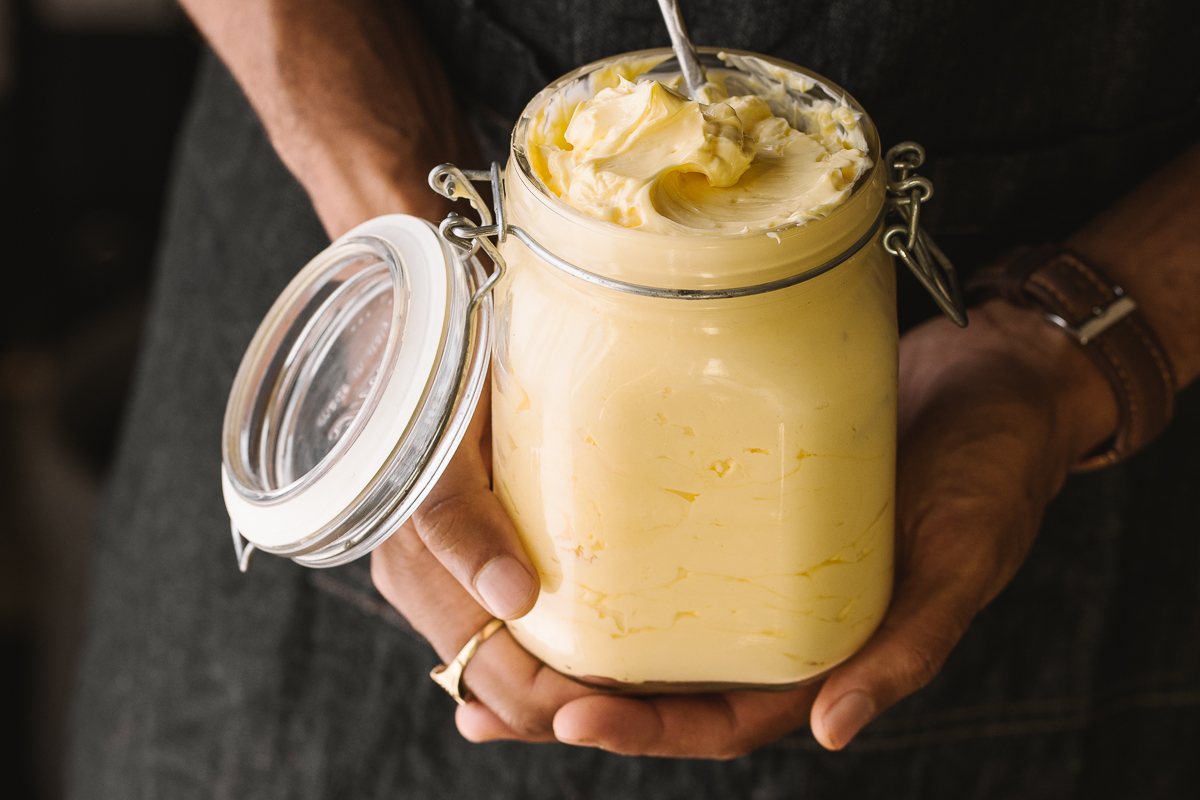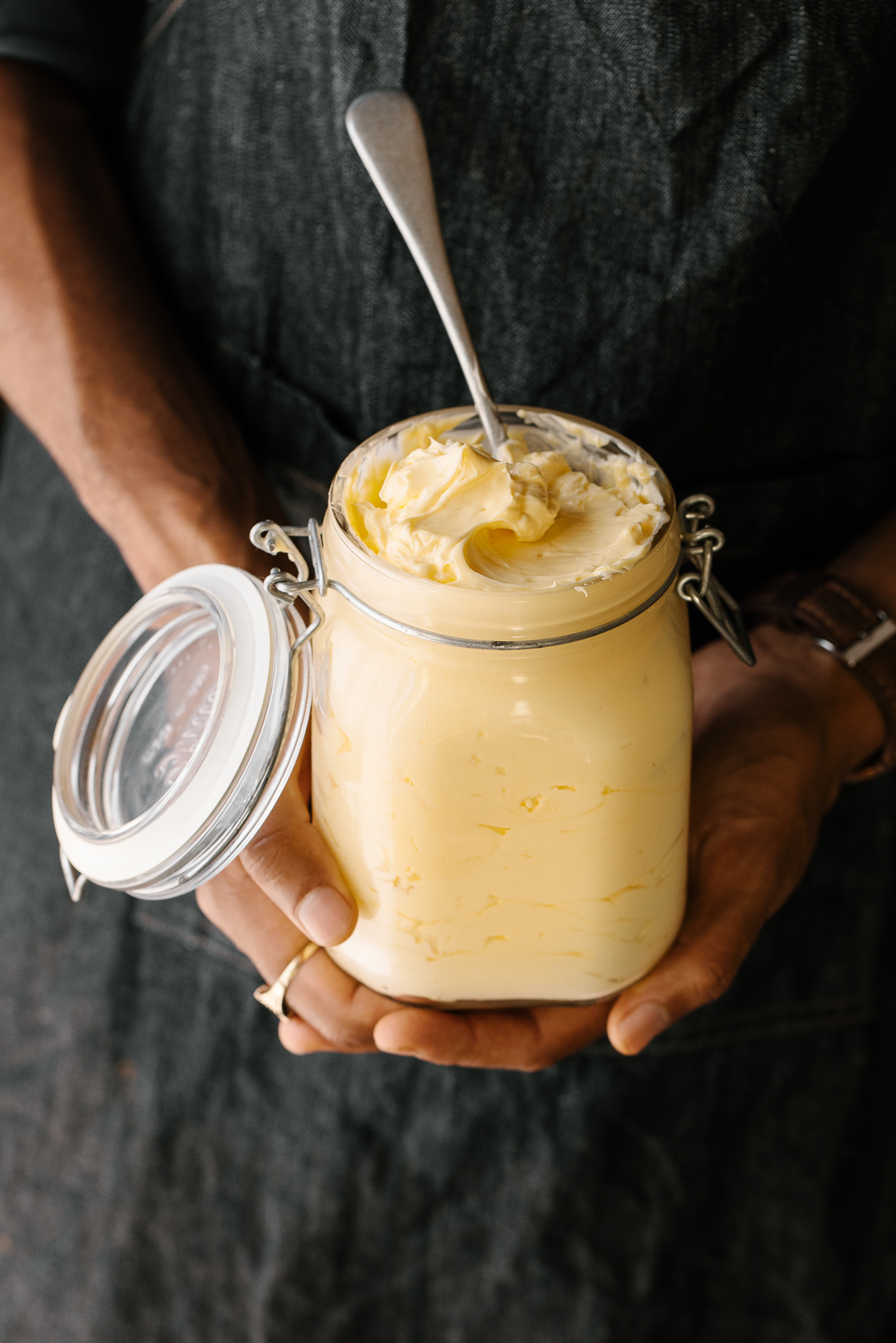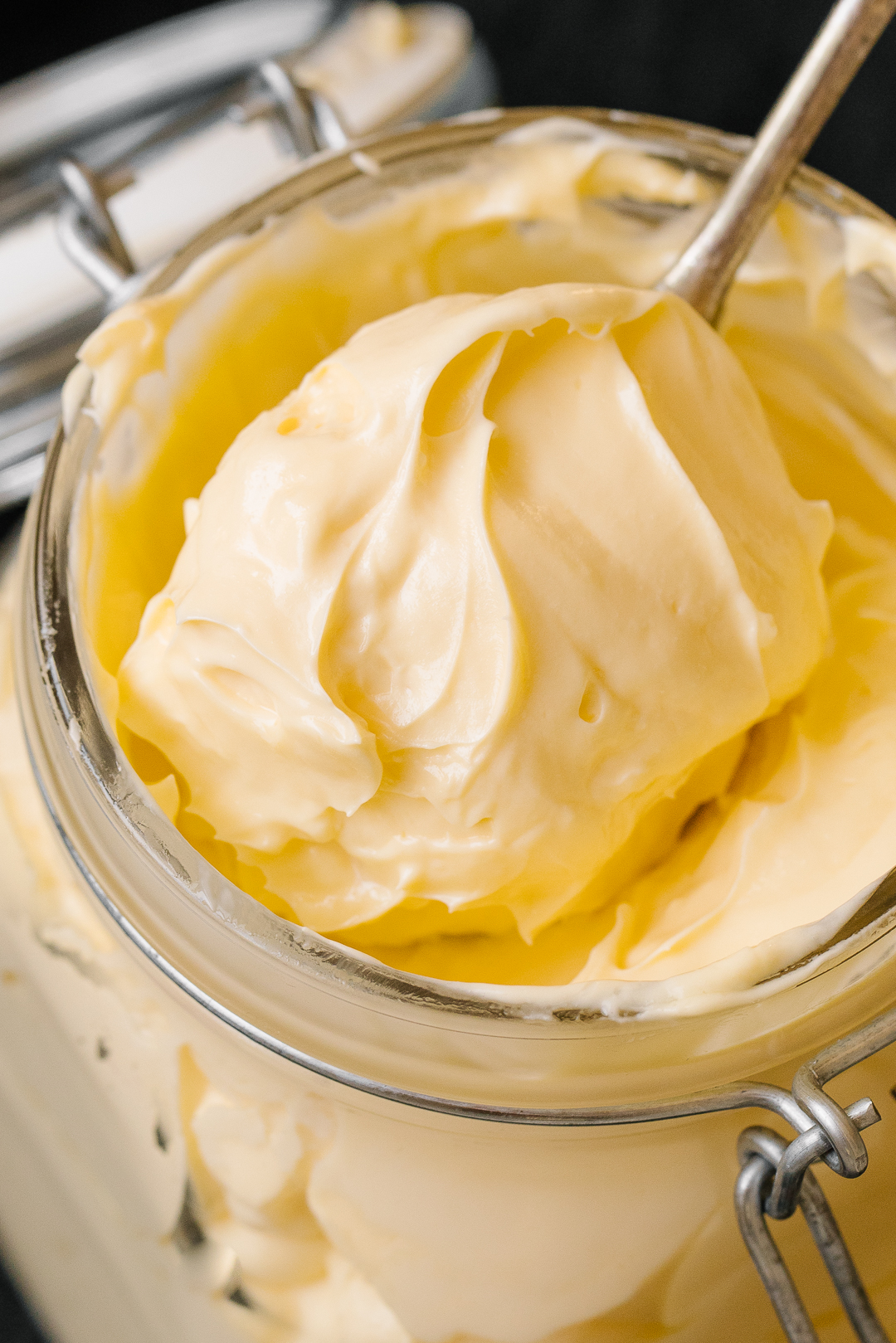Cultured Homemade Butter
Butter has to be one food I can no longer live without, and I truly believe it’s a true superfood.
Take A Look At The Long List Of Health Benefits You Can Receive When You Eat It!
Butter is rich in the most easily absorbable form of Vitamin A necessary for thyroid and adrenal health.
One of the most magically beneficial compounds in butter is the metabolism-boosting fatty acid butyrate. Butyrate is also linked to reduced inflammation, and supporting the healthy bacteria in your gut.
It contains lauric acid, important in treating fungal infections and candida.
Contains anti-oxidants that protect against free radical damage.
It also provides anti-inflammatory and sugar stabilising nutrients like omega-3 fats and vitamin D + it supplements the body’s nutritional need for zinc, iodine, copper, chromium, manganese and selenium.
Is a great source of fat soluble Vitamins A, D, E and K.
Vitamin D found in butter is essential to absorption of calcium.
Saturated fats in butter have strong anti-tumor and anti-cancer properties.
Butter contains conjugated linoleic acid, which is a potent anti-cancer agent, muscle builder, and immunity booster
Is a source of iodine in highly absorbable form.
May promote fertility in women.
Contains Arachidonic Acid (AA) which plays a role in brain function and is a vital component of cell membranes.
Ingredients
600ml organic, unpasteurised cream (you can use more cream if you’d like to make a larger batch of butter) (if possible, try to get cream closer to it’s use by date)
3 Tbsp coconut yoghurt
3-4 cups ice water (for washing the butter)
Optional; salt to taste
Instructions
Combine cream and coconut yoghurt in a clean glass jar, stir to combine. Close the lid tightly and allow it to ferment in a warm area of your kitchen overnight, or up to 24 hours. You’ll know it’s ready when it smells and tastes rich, fermented and tangy.
Place the fermented cream into a mixing bowl. Cover the top with a paper towel or a tea towel to prevent splattering.
Turn the mixer on medium-high and churn the cream until the yellow curds begin to separate from the buttermilk, this will take roughly 2-3 minutes. It should have the appearance of liquidy cottage cheese.
Line a fine-mesh sieve with a double layer of cheesecloth and place it over a large bowl. Make sure there is plenty of extra overhang of cheesecloth.
Slowly pour the buttermilk through the cloth lined sieve and then dump the butter curds in. Let sit for 1 to 2 minutes and allow the buttermilk to drip through. Gather the ends of the cheesecloth up and around the butter, pushing the curds down and into a ball. Twist the cheesecloth and squeeze to extract as much buttermilk as possible. You will be left with a butterball.
Pour the buttermilk into a separate container and reserve for another use.
Place the butterball into a bowl. Pour some of the ice water over the butter and, using a spatula to wash the butter, folding it over itself and pressing down to extract any extra buttermilk. Drain off the milky liquid and discard it; repeat this process until the liquid is clear, you may need to do this 4-5 times. The butter will start to harden; at that point your hands may work better than the spatula.
Place the butter on a clean kitchen towel and pat lightly to remove any of the excess moisture. Knead a few times with your hands and pat dry again; this will help extend its storage life.
Optional; sprinkle the finished butter with salt and knead a few more times to evenly distribute the salt.
Lay out 2 sheets of baking paper, divide the butter in half and place it onto the baking paper. Form the butter into a log or brick shape and then roll it up in the paper and twist the ends to seal, or wrap the paper around the butter brick.
Refrigerate until ready to use. The butter will keep in the refrigerator for about three weeks (if you’ve removed all the buttermilk) or it can be frozen for several months.
If you cannot tolerate butter, try my incredibly easy Golden Ghee recipe.
You can also read my blog ‘10 Reasons Why Ghee Is A Superfood’






